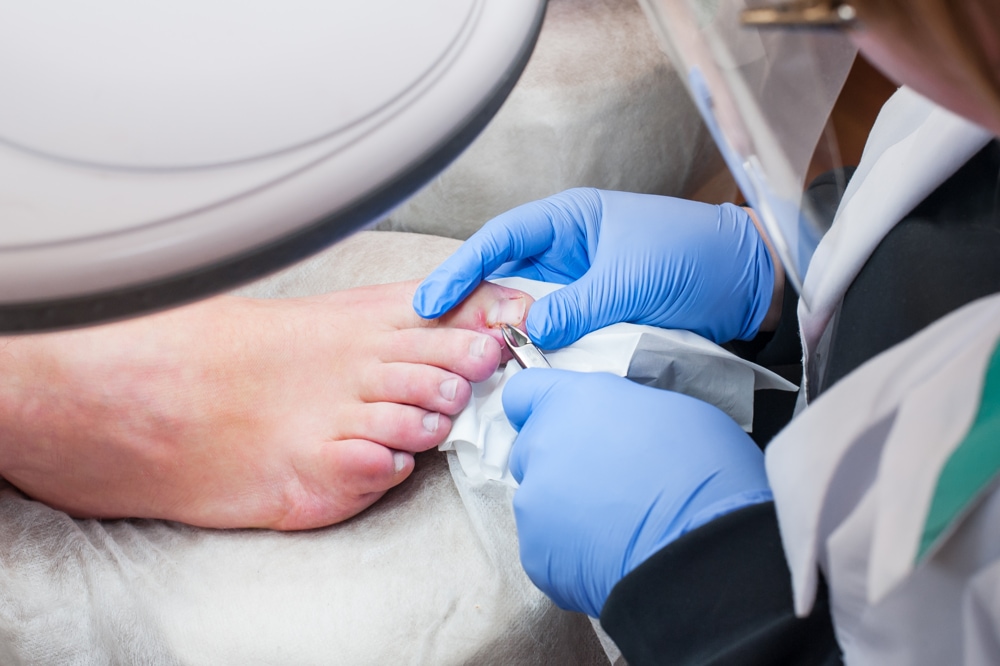Treating an ingrown toenail
Ingrown toenails are very commonly seen at the Sydney Podiatry Clinic and can affect any toenail, and less commonly, any fingernail. They occur when the nail grows into flesh adjoining the nail and can be caused by factors such as injury, improper trimming of the nail or congenital causes. The condition frequently recurs unless the root causes are addressed.
Nails that in-grow typically present with some pain, redness, swelling and (at later stages) pus around the offending nail. Like having a piece of glass or splinted embedded in your skin, the offending spike of the ingrown toenail should be removed promptly. Left untreated, the condition will often develop into a painful wound that does not resolve on its own.
Why see a Podiatrist?
While many professions claim to be able to handle ingrown toenails, removals, and infections, only podiatrists and orthopaedic surgeons traditionally handle such procedures, and the two tend to have very different approaches. Orthopaedic surgeons often remove the whole nail while podiatry focuses on removing the section of the nail growing into the flesh.
What can a podiatrist do for me?
A podiatrist is a foot specialist qualified to perform various treatments for nail conditions, including managing infections and handling ingrown toenails conservatively and surgically.
Our podiatrists are experts with minimally invasive nail procedures and have developed procedures for resolving this issue with minimal side effects, a short recovery period, and low risk of recurrence.
What is the treatment?
This procedure is known as a partial or total nail avulsion depending on the degree of removal and requires the podiatrist to lift the ingrown portion of the nail from under the edge of the skin. This section is then cut through from the tip of the nail to the root and removed, exposing the nail matrix. To prevent recurrence of the ingrown toenail a chemical is applied to the exposed nailbed.
As podiatrists are experts in performing small delicate procedures with razor-sharp precision, there will only be minimal damage to the areas around the ingrown nail. If the nail condition is minor or due to a one-time poor nail cutting technique, then minor surgical procedures can be avoided using non-invasive in-clinic removal techniques.
Following any minor procedures, a wound dressing will be applied and changed periodically to enhance healing and reduce the risk of post-surgical infection.
- No Stitches & No Scars – Aesthetically Pleasing Results
- Swift Recovery – less than 2 weeks post-procedure healing
- No Downtime – Able to return to daily activities quickly
- Low Chance of Recurring – 2-5% recurrence rate
Suitability for minor surgical procedures are subject to a thorough assessment, restrictions may apply depending on the status of your health. To understand your suitability for treatment, speak to one of our podiatrists today.


